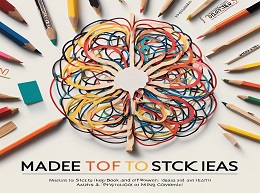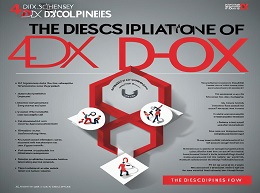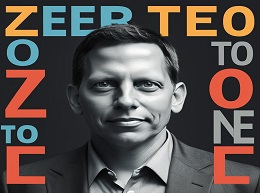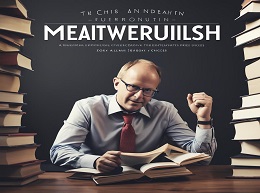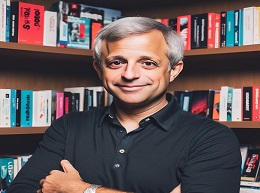The Lean CEO: Leading the Way to World-Class Excellence
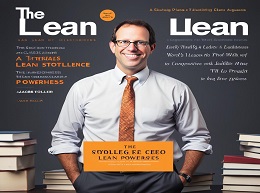
The Lean CEO: Leading the Way to World-Class Excellence - A Comprehensive Review
In "The Lean CEO: Leading the Way to World-Class Excellence," Jacob Stoller delves into the world of lean management, providing a compelling exploration of how top CEOs have successfully implemented lean principles to drive their organizations to unparalleled success. Through engaging stories and practical insights, Stoller presents a detailed guide for leaders aiming to transform their companies into lean powerhouses. This review will dissect the core themes, supported by illustrative examples, to offer a comprehensive understanding of the book's invaluable lessons.
The Essence of Lean Leadership
Jacob Stoller begins by highlighting the transformative power of lean management, a methodology derived from the Toyota Production System, which focuses on eliminating waste, optimizing processes, and delivering maximum value to customers. Stoller emphasizes that lean is not just a set of tools but a fundamental shift in organizational culture and leadership mindset.
Example: Stoller introduces Art Byrne, former CEO of The Wiremold Company, who adopted lean principles to revolutionize the company. Under Byrne's leadership, Wiremold achieved significant improvements in productivity, customer satisfaction, and financial performance, showcasing the profound impact of lean management.
Principle 1: Respect for People
Central to lean philosophy is the respect for people, which involves empowering employees at all levels to contribute to continuous improvement. Stoller argues that successful lean CEOs foster a culture of trust, collaboration, and open communication.
Example: At Danaher Corporation, CEO Larry Culp implemented the Danaher Business System (DBS), which emphasized employee involvement in problem-solving. By respecting and valuing employees' input, Danaher created a culture of continuous improvement, leading to sustained growth and operational excellence.
Principle 2: Continuous Improvement (Kaizen)
Lean leaders are committed to relentless pursuit of perfection through continuous improvement, known as Kaizen. This involves constantly identifying and eliminating inefficiencies to enhance processes and deliver better value to customers.
Example: Toyota, the originator of lean principles, exemplifies Kaizen through its continuous improvement culture. Employees are encouraged to suggest improvements, resulting in over a million ideas implemented annually, driving significant advancements in quality and efficiency.
Principle 3: Focus on Customer Value
Lean management prioritizes delivering exceptional value to customers by understanding their needs and optimizing processes to meet those needs efficiently. Stoller highlights how lean CEOs align their organizations' objectives with customer satisfaction.
Example: Inditex, the parent company of Zara, under the leadership of CEO Pablo Isla, has mastered lean principles to create a highly responsive supply chain. By focusing on customer preferences and rapidly adapting to trends, Zara consistently delivers high-value products, ensuring customer loyalty and market leadership.
Visionary Leadership
Stoller underscores the importance of visionary leadership in driving lean transformation. Lean CEOs articulate a clear vision and inspire their teams to embrace lean principles, fostering a shared commitment to excellence.
Example: Jeff Bezos of Amazon is renowned for his visionary leadership and focus on customer-centricity. By embedding lean principles into Amazon's operations, Bezos has created a culture of innovation and efficiency, propelling the company to global dominance.
Leading by Example
Effective lean leaders lead by example, demonstrating commitment to lean practices in their daily actions and decisions. Stoller explains that this hands-on approach builds credibility and motivates employees to adopt lean principles.
Example: At the Brazilian company Semco, CEO Ricardo Semler transformed the organization by practicing what he preached. Semler's participative leadership style and transparency encouraged employees to take ownership of lean initiatives, resulting in a highly adaptive and efficient organization.
Building a Lean Culture
Creating a sustainable lean culture requires ongoing effort and reinforcement. Stoller discusses how lean CEOs cultivate an environment where lean thinking becomes ingrained in the organizational DNA.
Example: At Alcoa, former CEO Paul O'Neill focused on safety as a gateway to lean culture. By making worker safety a top priority, O'Neill fostered a culture of continuous improvement and respect for people, which extended to all aspects of Alcoa's operations, driving substantial performance gains.
Resistance to Change
One of the biggest hurdles in lean transformation is resistance to change. Stoller emphasizes the need for lean CEOs to address this challenge through clear communication, education, and demonstrating the benefits of lean practices.
Example: When Art Byrne initiated lean transformation at Wiremold, he encountered resistance from employees accustomed to traditional methods. By providing training and involving employees in the transformation process, Byrne gradually overcame resistance, resulting in widespread adoption of lean principles.
Sustaining Momentum
Maintaining the momentum of lean initiatives is critical for long-term success. Stoller highlights strategies lean CEOs use to keep their organizations focused on continuous improvement.
Example: At Intel, former CEO Andy Grove institutionalized a culture of continuous improvement by setting clear goals and regularly reviewing progress. This sustained focus on lean principles enabled Intel to maintain its competitive edge and drive innovation consistently.
Value Stream Mapping
Value stream mapping is a key lean tool that helps organizations visualize and analyze the flow of materials and information, identifying areas for improvement. Stoller explains how lean CEOs utilize this tool to optimize processes.
Example: In a healthcare setting, lean leaders use value stream mapping to streamline patient care processes, reducing wait times and improving service quality. This approach has been successfully implemented in hospitals like Virginia Mason Medical Center, leading to enhanced patient outcomes and operational efficiency.
Standard Work
Standard work involves defining and documenting the best practices for each process to ensure consistency and efficiency. Stoller illustrates how lean CEOs use standard work to maintain high standards and minimize variability.
Example: In manufacturing, companies like Toyota utilize standard work to ensure uniformity and quality in production processes. This practice not only enhances efficiency but also facilitates continuous improvement by providing a baseline for evaluating changes.
Kaizen Events
Kaizen events are focused, short-term projects aimed at making rapid improvements in specific areas. Stoller describes how lean CEOs leverage these events to drive quick wins and build momentum for broader transformation.
Example: At a retail company, a Kaizen event might focus on optimizing inventory management processes. By involving cross-functional teams and implementing rapid changes, the company can quickly see improvements in inventory accuracy and turnover rates.
The Path to World-Class Excellence
Jacob Stoller’s "The Lean CEO: Leading the Way to World-Class Excellence" offers a comprehensive and inspiring guide for leaders seeking to harness the power of lean management. Through compelling examples and actionable insights, Stoller demonstrates that lean principles, when embraced wholeheartedly by visionary leaders, can drive significant improvements in performance, customer satisfaction, and organizational culture. Whether you're a CEO, manager, or aspiring leader, this book provides valuable lessons on leading the way to world-class excellence.
Final Thoughts
"The Lean CEO" is a must-read for anyone committed to operational excellence and continuous improvement. Stoller’s emphasis on the human aspects of lean management, combined with practical tools and real-world examples, makes this book an invaluable resource for leaders at all levels. By adopting the principles and practices outlined in this book, organizations can navigate the complexities of modern business environments and achieve sustainable success through lean transformation.
